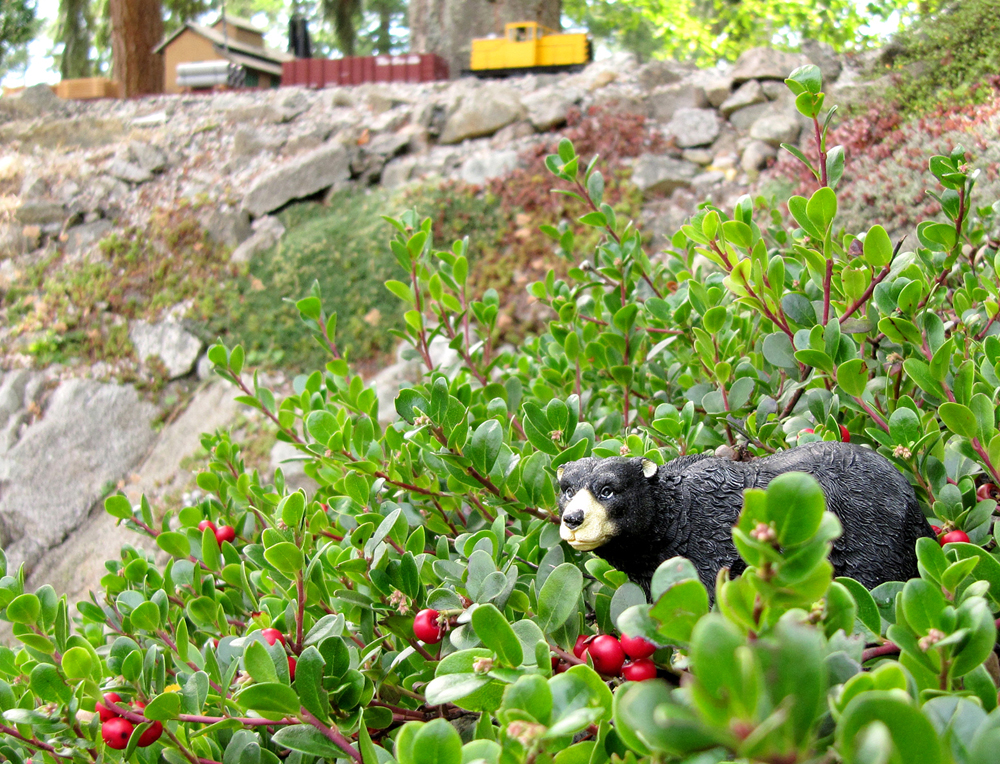Common name: Bearberry, kinnikinnick
Latin name: Arctostaphylos uva-ursi
Plant type: Groundcover
Plant size: 6″ high spreading to 3′ or more
USDA Hardiness Zones: 2-7
Cultural needs: Moist, well drained, acidic soil; part shade or full sun

Common bearberry is native to the US and Canada (as well as other continents) and is found in damp, acidic forests and fields. Indigenous Americans named the useful herb kinnikinnick. Oval, leathery, evergreen leaves grow on woody branching stems to form a low, shiny mat, tough enough to walk on occasionally. Summer heralds pinkish-white clusters of pea-size bells followed by edible red berries in late summer and fall. Pictured, kinnikinnick holds down a steep, moist hillside in August. And yes, bears do eat them. A.u. ‘Massachusetts’ and A.u. ‘Wood’s Red’ are two low varieties with similar characteristics.
If you like this look but live in a warmer climate, then their cousins from California, creeping manzanita (Arctostaphylos hookeri ‘Monterey Carpet’, Zones 8-9), and from Nevada, pine-mat manzanita (Arctostaphylos nevadensis, Zones 7-9), will work for you. If your local nursery doesn’t carry bearberry, find out why or find the plant online at www.arrowheadalpines.com.













